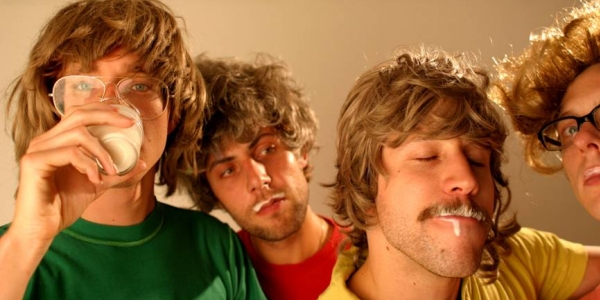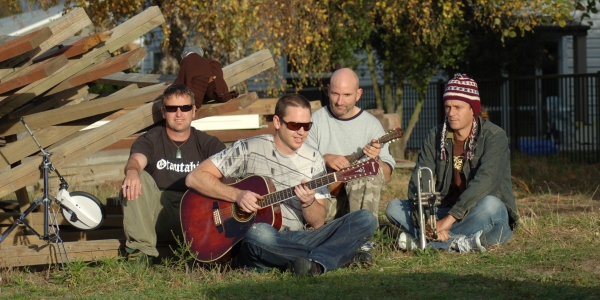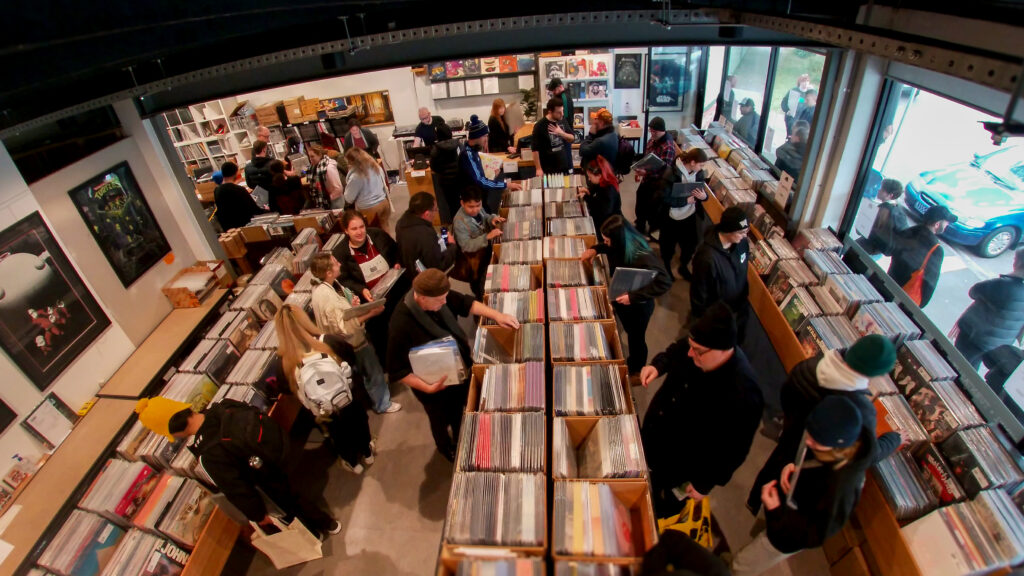So The Whitest Boy Alive refers to someone who is extremely naive, I ask? “It’s a person whose personality is still to be formed,” Öz says, “who goes to a big town and sees all kinds of opportunities and possibilities, and maybe starts down the road to becoming a real person. That’s the kind of person, the kind of experience that we were thinking about when we made the first album. Dreams was really all about moving to the big city and following your dreams. On the next one, Rules, the guy has become more grown up and has started to deal with the rules of the world. Some are to be followed, and some are to be abolished.” The band’s third album is still in its plotting and planning stages, but Öz assures me that he will return again, for some new adventures.
The Whitest Boy Alive started out as an electronic act, with Öz and Kings Of Convenience singer Erlend Øye, but as they added more members, they stripped back their sound to its bare essentials. Though their roots are in dance, and their songs draw on the more wistful side of disco and electro pop, everything they do is live. Everything The Whitest Boy Alive do in the studio, Öz tells me, is played in continuous takes, and recorded without overdubs, programming, or any other kind of technological trickery. It’s a rigorous approach, and it takes an awful lot of work to get it right.
“In the earliest days of recorded music, bands would always record live, but these days, it’s something quite unique and unusual,” he says, explaining the band’s rationale. “I guess partly that comes down to convenience – overdubs and guide tracks make it a lot easier to record. We thought it would make the whole thing easier and faster if we tried to get the right takes direct to tape, without relying on any technology. That was our great idea, but it was kind of hard to realise that. We ended up playing 200 takes of the one song before we really got it right, then we had to chose which of the recordings was the best one. I mean, for an idea we came up with to try and make everything move quickly, it resulted in a very long recording process.”
For their third album, though, The Whitest Boy Alive have taken a somewhat different approach. “So far, we have recorded our albums in studios that we’ve built ourselves,” Öz tells me. “Each time, we found a nice location we liked, we set up our gear, and we did it amateur-style. This year, for the first time, we decided that we wanted to try something new, so we went into a great recording studio in Hamburg, rented some time there and recorded some songs. The results have been interesting, because the sound is very different. It’s cleaner than what we’re used to. We’re looking for more songs at the moment to refine more what the new direction is going to be.”
After a long break over the European summer, The Whitest Boy Alive are looking forward to going on tour again. “That’s where the magic can really start to happen,” Öz says. “We like to use our sound-check time before the shows to work on new material – we use our excitement to test new things out, and create new ideas. We always bring a little audio recorder with us, and try and use the ideas we come up with for new songs.” After their last trip to Australia, which saw them play a brief but wonderful set at the Never Ever Land festival in 2008, they’re thrilled to be returning for a more substantial headline tour. “The last time, people had to buy a festival ticket to see The Whitest Boy Alive,” he says. “We want people to be able to see us play a proper show. We feel it necessary to come and play a show for Whitest Boy Alive fans.”
A cover of Stardust’s Music Sounds Better With You was a highlight of their Never Ever Land set, and I ask Öz if they’ll be busting out anything similar this time. “We are very connected to electronic dance music,” he says, “so we used to cover that one a lot, alongside You Don’t Know Me by Armand Van Helden, and Show Me Love by Robin S. It’s really hard to say what’s going to happen this time, though, because we like to make up our set list on the spur of the moment. It’s kind of like a DJ set, in that we come prepared with all of our songs, but we choose which ones to play on the night. It’s hard to say what will happen before a show – in the middle of a show, depending on where the mood is going, we can go off in a number of directions.”
This new approach makes for a highly enjoyable and unconventional live show – as long as everything goes to plan. “If it works, it’s great,” Öz says with a laugh. “The hardest part for us, when it comes to playing songs, is the beginning and the end, so if you run them all together, as a DJ would, you’re never faced with the problem of how to start and finish them. It very often works well, and sometimes, it ends in catastrophe. A DJ has to synchronise two records to match the beats, and in Whitest Boy Alive, there are four of us, which makes it four times as hard. We have to do the transition right, and sometimes, that doesn’t work properly. When the DJ drops a mix, that’s a huge disaster, and it’s entirely possible for us to drop a mix in our live set, too!”







